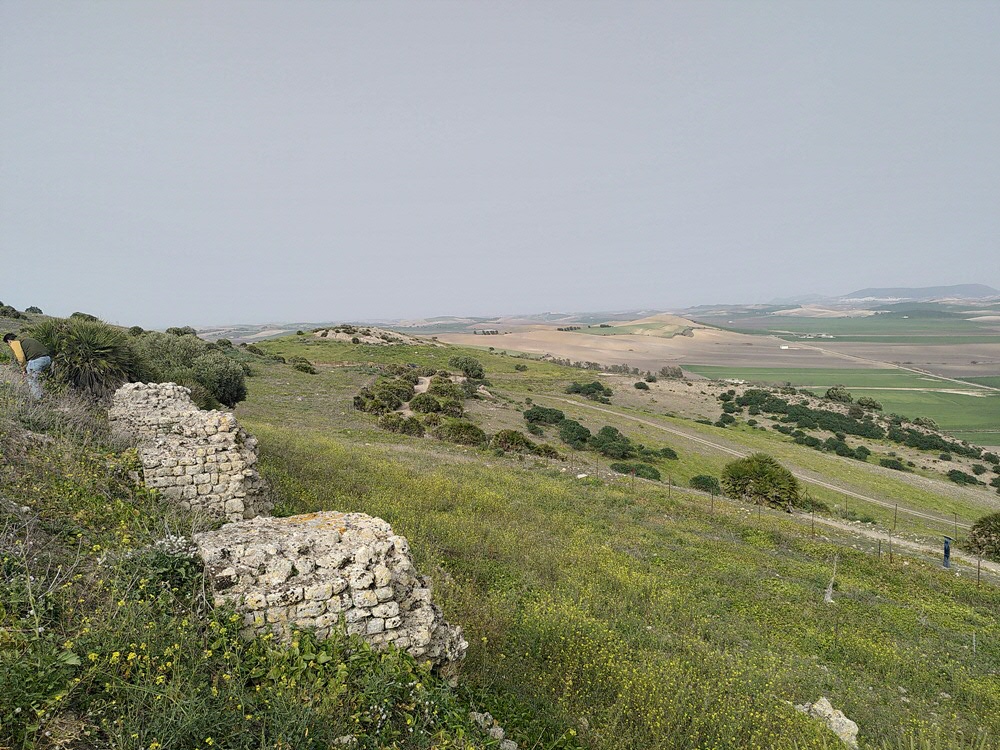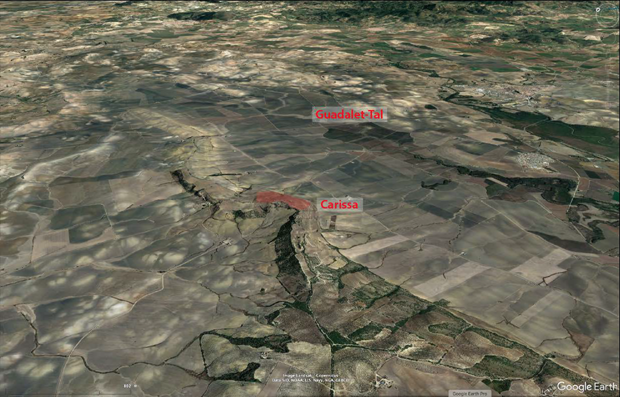Archaeological project investigates the history of the Spanish settlement Carissa Aurelia
Archaeologist Dr Tymon de Haas is participating in a new archaeological field research project in South Andalusia, in collaboration with partners from the universities of Cologne, Seville, and Kiel. The project aims to investigate the history of Carissa Aurelia, a settlement believed to have been founded in the 6th or 5th century BC. The research is funded by the German Fritz Thyssen Foundation.
Text: Marjolein te Winkel
Carissa Aurelia
Carissa Aurelia is located in the south of Spain, approximately 60 km east of Cadiz in the Guadalete Valley. It was founded around 2500 years ago by the Turdetani, a people who lived in southern Spain in classical antiquity. From the 4th century BC, Carissa Aurelia came under Carthaginian influence and around 200 BC, it fell under Roman rule.

In the first centuries AD, Carissa Aurelia developed into a sophisticated city, with features such as city walls, residential areas, various sanctuaries, cemeteries, and possibly a theater. At the highest point of the city, there was an extensive Acropolis-Forum complex, the religious, political, and social heart of the city. The city benefited from the fertile agricultural lands in the Guadalete Valley and had connections to other cities in the Roman Empire through its access to the Atlantic Ocean. The settlement was likely abandoned during the transition to the Middle Ages.
Both the city and the surrounding area have been relatively underexplored archaeologically and have remained largely free from modern influences: there has been no recent construction on the site of the city. The settlement and the surrounding environment are well-preserved and are excellent subjects for research.

Research into the settlement and the surrounding countryside
In the coming years, De Haas and his colleagues will investigate the social and economic history of the settlement and the Guadalete Valley. The Spanish and German partners will map the city of Carissa Aurelia itself, and De Haas will lead the research of the surrounding countryside. The researchers will employ traditional research techniques such as excavations and field surveys, as well as new natural science methods, using drones, ground-penentrating radar, resistivity and magnetometry surveys that allow them to "see" underground without excavation.
Furthermore, extensive material analyses will take place, with specialists from the UG involved. Dr Canan Cakirlar will conduct the analysis of animal bone material, and Dr Mans Schepers will analyze botanical samples. The project also serves as a learning opportunity to educate bachelor's and master's students from the participating universities in various types of archaeological field research.
| Last modified: | 02 May 2024 2.28 p.m. |
More news
-
12 March 2025
Breaking news: local journalism is alive
Local journalism is alive, still plays an important role in our lives and definitely has a future. In fact, local journalism can play a more crucial role than ever in creating our sense of community. But for that to happen, journalists will have to...
-
11 March 2025
Student challenge: Starting Stories
The Challenge Starting Stories dares you to think about the beginning of recent novels for ten days.
-
11 March 2025
New: Sketch Engine, tool for language research
Sketch Engine is a tool for language research, which can also be used for text analysis or text mining.
